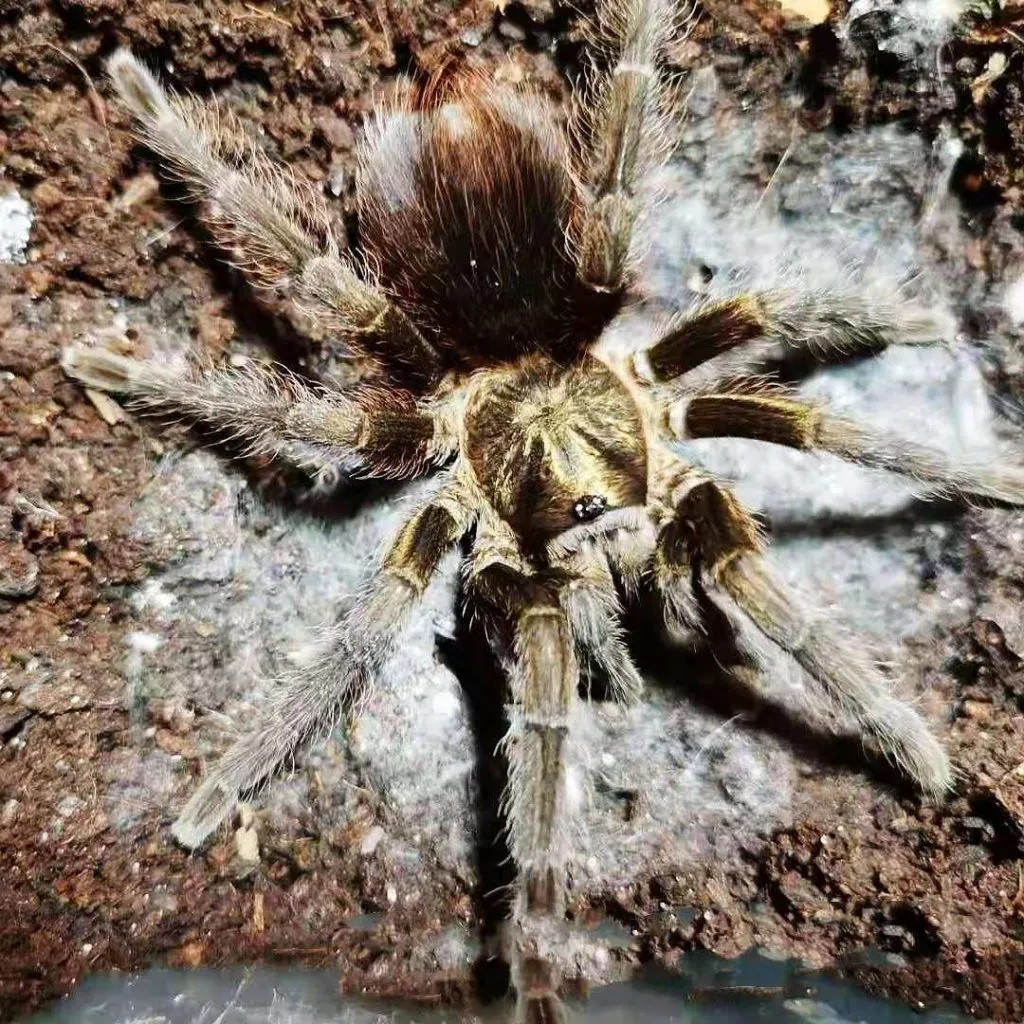What is a Blue Panay Tarantula?
The Blue Panay Tarantula, scientifically known as Cyriopagopus sp. ‘Blue’, is a captivating species gaining popularity among tarantula enthusiasts. Originating from the Philippines, specifically the island of Panay, this arboreal tarantula is admired for its striking blue coloration, which intensifies with maturity. Its beauty, combined with a manageable size, makes it a desirable choice for both novice and experienced keepers. The name ‘Blue Panay’ highlights its origin and the most distinctive feature, setting it apart from other tarantula species and captivating many potential owners.
Appearance and Characteristics
The visual appeal of the Blue Panay Tarantula is undeniable. Mature females often display vibrant blue hues, particularly on their legs and carapace, while the abdomen may have a darker coloration. Males, on the other hand, tend to be less vividly colored. Adults can reach a leg span of up to 6-7 inches, making them a medium-sized tarantula. Their bodies are covered in fine hairs, contributing to their overall appearance. Like all tarantulas, they have eight legs, two pedipalps (used for sensing and manipulating food), and chelicerae (fangs). The color can vary slightly depending on the tarantula’s age, molting cycle, and individual genetics, but the blue coloration is their most striking feature.
Habitat and Natural Environment
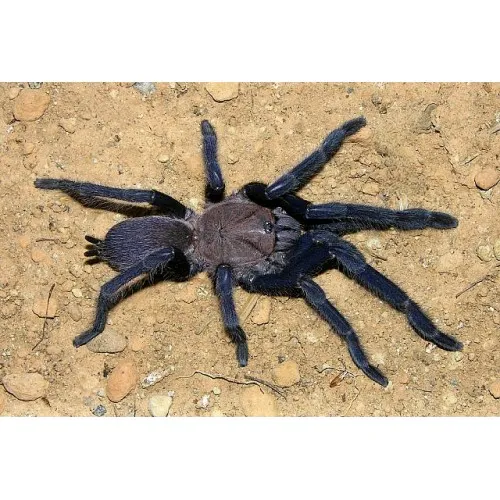
Understanding the natural habitat of the Blue Panay Tarantula is crucial for providing optimal care. These tarantulas are native to the humid, tropical forests of Panay Island in the Philippines. They are primarily arboreal, meaning they spend most of their time in trees, where they construct silk retreats. Their natural environment is characterized by high humidity, consistent temperatures, and abundant rainfall. They are often found in areas with dense vegetation, providing them with ample cover and protection from predators. Replicating these conditions in captivity is critical for the tarantula’s health and well-being, contributing to its longevity and vibrant coloration. Careful consideration of its natural environment will guide the setup of a suitable enclosure.
Is it Really Blue?
The striking blue coloration is, indeed, a characteristic feature of the Blue Panay Tarantula. However, the intensity of the blue can vary. The color is not due to pigmentation but rather to the structure of the hairs on their bodies. These hairs scatter light in a way that produces the blue hue. The color is most prominent in mature females. Younger specimens and males may exhibit less intense blues. The coloration may also appear more vivid under certain lighting conditions. The blue is a key reason for the species’ popularity among tarantula keepers. Proper care, including providing the right humidity and environment, can help maximize the vibrancy of the blue coloration in your tarantula.
Where to Buy a Blue Panay Tarantula
If you are considering acquiring a Blue Panay Tarantula, it’s essential to find a reputable seller. Many online and local pet stores specialize in exotic pets. Look for vendors with positive reviews and a good reputation within the tarantula community. Check the seller’s website or ask for references to ensure they are knowledgeable and ethical. Prioritize sellers who prioritize the health and welfare of their tarantulas. Ensure the tarantula is captive-bred, as this helps conserve wild populations. Verify that the seller can provide information about the tarantula’s origin, age, and any specific care requirements. Be wary of unusually low prices, which might indicate unhealthy specimens or unethical practices. Buying from a trusted source increases the likelihood of receiving a healthy tarantula and supporting responsible pet ownership.
Health and Temperament
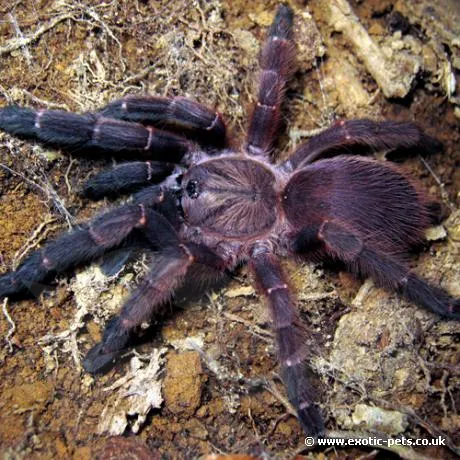
Blue Panay Tarantulas, like all tarantulas, are generally solitary creatures. They are not social animals and should be kept individually. Their temperament can vary, but they are generally considered to be defensive rather than aggressive. They may exhibit a threat posture if they feel threatened, such as raising their front legs or flicking urticating hairs from their abdomen (in some species). While not known to be highly venomous to humans, their bite can be painful, and their urticating hairs can cause skin irritation. It’s crucial to handle them with care and respect, minimizing stress and providing a suitable environment. They are generally hardy species if their needs are met, so understanding their behavior and being cautious is important.
How to Care for a Blue Panay Tarantula
Enclosure and Setup
The enclosure should be appropriately sized for the tarantula’s leg span, typically a minimum of 12x12x18 inches for an adult. As arboreal tarantulas, they require more vertical space than terrestrial species. A secure enclosure with a well-ventilated lid is essential to prevent escape. The substrate should be a mix of coconut fiber, sphagnum moss, and a small amount of peat moss. These materials help maintain humidity. Provide a hide, such as a piece of cork bark or a hollow log, where the tarantula can retreat. Include a water dish with fresh water at all times. Ensure the enclosure is free of sharp objects and any potential hazards.
Feeding and Diet
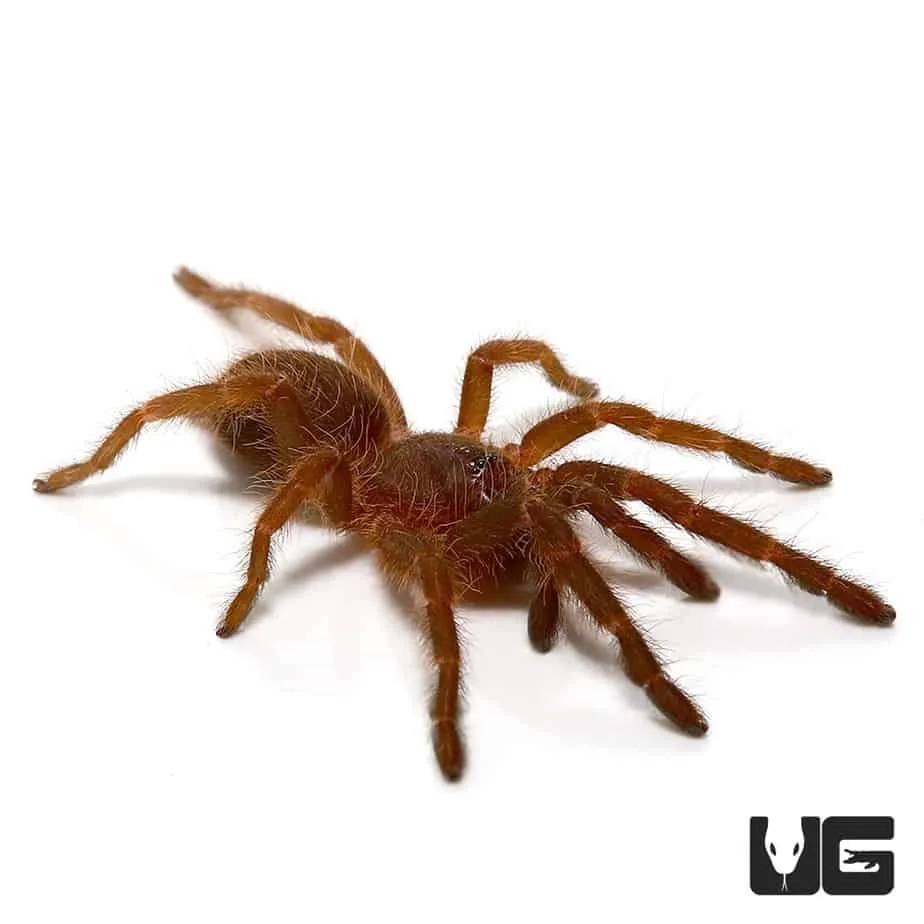
Blue Panay Tarantulas are insectivores, meaning their diet consists primarily of insects. Crickets, roaches, mealworms, and other commercially available insects are suitable food sources. Feed juveniles 2-3 times per week, and adults 1-2 times per week. The size of the prey should be appropriate for the tarantula’s size; a good rule of thumb is to offer prey that is no larger than the tarantula’s body. Remove any uneaten prey within 24 hours to prevent stress on the tarantula. Supplement the diet with occasional treats, such as a small piece of fruit for hydration, but the primary food source should be live insects. Always ensure the food is pesticide-free to avoid harming the tarantula.
Humidity and Temperature
Maintaining the correct humidity and temperature is crucial for the health of your Blue Panay Tarantula. These tarantulas thrive in a humid environment, typically around 70-80%. Regular misting of the enclosure with dechlorinated water is necessary to maintain humidity. The enclosure should also have good ventilation to prevent mold growth. The temperature should be kept between 75-85°F (24-29°C). A heat lamp or under-tank heater can be used to maintain the appropriate temperature, but be careful not to overheat the enclosure. Monitor the temperature and humidity levels with a hygrometer and thermometer to ensure they stay within the correct ranges. Correct humidity and temperature are essential for successful molting.
Handling and Safety
Handling Blue Panay Tarantulas is generally not recommended unless necessary, such as for enclosure maintenance. They can be easily stressed, and handling increases the risk of bites or urticating hair exposure. If you must handle your tarantula, do so gently and slowly, and never handle them from a height to avoid injury if they fall. Always wash your hands before and after handling. Be aware of the threat posture and be prepared to avoid them. Have a safe space prepared in case your tarantula escapes. Keep children and other pets away from the enclosure to prevent accidental harm. Respect for the tarantula’s needs is key.
What to Expect as a Pet
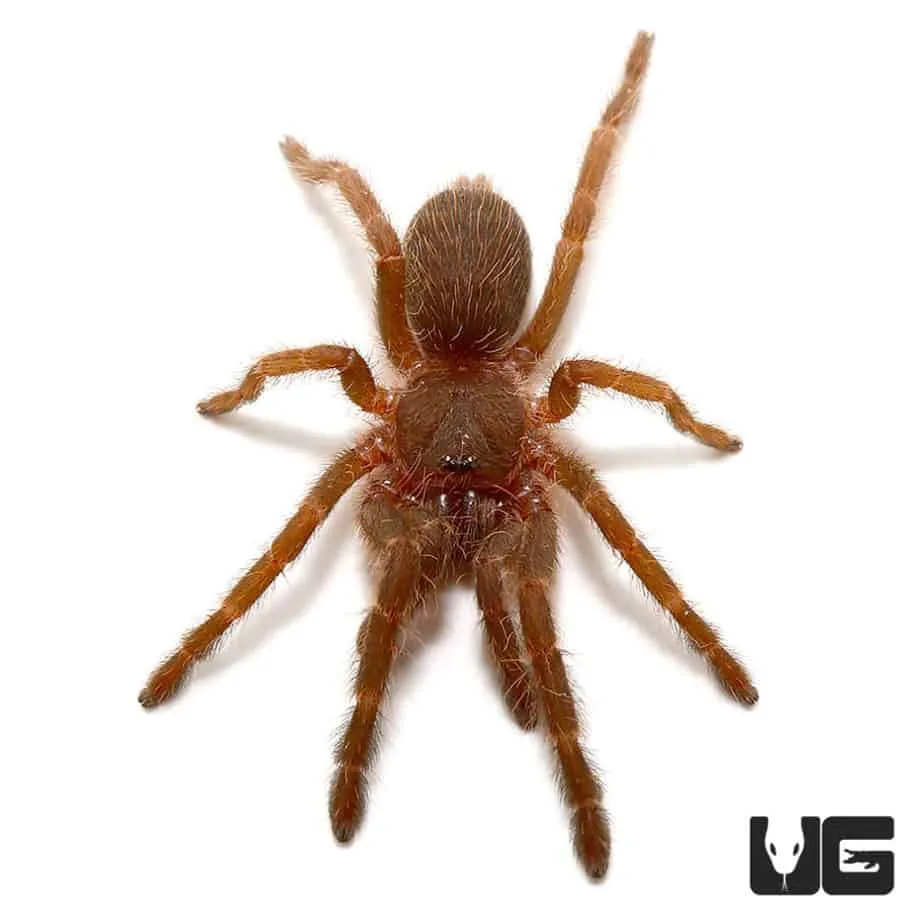
Owning a Blue Panay Tarantula can be a rewarding experience. They are generally low-maintenance pets, but they do require specific care to thrive. You should be prepared to provide a suitable enclosure, maintain proper humidity and temperature, and feed them regularly. Their lifespan can be several years, and you will need to be committed to their care over that time. They can be fascinating to observe, with their unique appearance and behaviors. Be prepared to witness molting, where they shed their exoskeleton, and the resulting growth. Remember that they are not interactive pets in the traditional sense; they are best appreciated as a fascinating and beautiful species. Understand the species’ needs and be prepared to meet them.
Price and Availability
The price of a Blue Panay Tarantula can vary depending on the seller, size, and availability. They are often more expensive than more common species due to their rarity and the effort involved in breeding them. Expect to pay a higher price for a female, as they live longer and are in higher demand. Prices can range from a few hundred dollars to several hundred. The availability can also fluctuate. Check with multiple vendors and monitor online forums and marketplaces to get an idea of current prices and availability. Factor in the cost of the enclosure, substrate, and other supplies when budgeting for your new pet.
Common Issues and Diseases
Like all tarantulas, Blue Panay Tarantulas can be susceptible to certain health issues. The most common issues relate to improper husbandry. Dehydration can occur if the humidity is too low. Mites can infest the enclosure if the conditions are not kept clean. Poor molting can occur if the humidity or temperature is incorrect. Always research signs of common tarantula diseases to be able to act fast. If you see any of these issues, such as lethargy, loss of appetite, or unusual behaviors, it’s crucial to take corrective action and consult with an experienced tarantula keeper or veterinarian. Preventative care through proper husbandry is the best way to prevent these issues.
Finding a Reputable Seller

Choosing a reputable seller is one of the most important steps when buying a Blue Panay Tarantula. Look for sellers who have a strong reputation in the tarantula community. Check online reviews and ask for referrals. A good seller will be knowledgeable about tarantula care and be able to answer your questions. They should provide healthy specimens and be transparent about their breeding practices. Be wary of sellers offering unusually low prices. Look for sellers who offer a health guarantee and are willing to provide support after the sale. Buying from a reputable seller significantly increases your chances of getting a healthy and well-cared-for tarantula and can make all the difference in the long run.
Research and Preparation
Before purchasing a Blue Panay Tarantula, thorough research and preparation are essential. Learn as much as you can about tarantula care, including enclosure setup, feeding, humidity, and temperature requirements. Read books, watch videos, and consult with experienced keepers. Set up the enclosure before bringing the tarantula home. Make sure you have all the necessary supplies, including the substrate, hide, water dish, and food. Plan for the long term; tarantulas can live for many years. Prepare your home environment for a potentially venomous and fragile pet. Prepare a suitable plan and be ready to provide the best care possible for your new pet.
Avoiding Scams
Unfortunately, scams exist in the exotic pet market. To avoid being scammed when buying a Blue Panay Tarantula, do your homework. Always purchase from reputable sources. Be wary of sellers who demand upfront payment through methods that offer little protection. Ask for photos and videos of the specific tarantula you are buying. If the deal seems too good to be true, it probably is. If a seller is unwilling to answer your questions or provide information about their practices, consider it a red flag. Trust your instincts and don’t rush into a purchase. Take your time and do your research to avoid being a victim of a scam.
Final Thoughts on Blue Panay Tarantulas
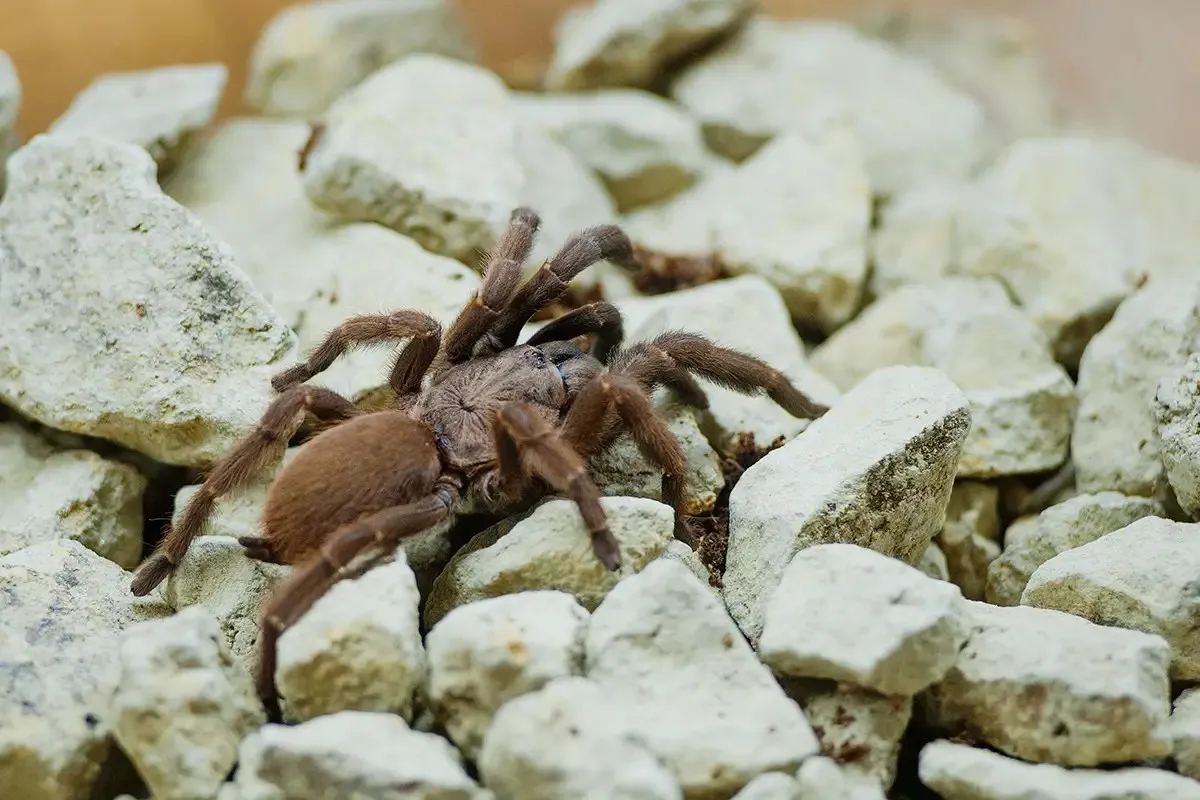
The Blue Panay Tarantula is a fascinating and beautiful species that can make a rewarding pet for the right owner. However, responsible ownership is essential. By understanding their needs, providing proper care, and sourcing from reputable sellers, you can enjoy the beauty and unique qualities of these amazing creatures. Remember to prioritize their well-being, and you will be rewarded with the unique experience of caring for this captivating tarantula species. Do your research, prepare thoroughly, and be ready to provide the best possible environment for your Blue Panay Tarantula.
